info@qflexinc.com +1(714) 664-0101 1301 E. HUNTER AVE, SANTA ANA, CA 92705, USA
Electro Static Chucks (ESC)
Electro Static Chucks (ESC)
Background:
Almost all of the memory devices and microprocessors use silicon wafers. These silicon wafers are processed through various chambers for yielding a final product. The biggest concern is cleanliness in the chamber. That is why most of the wafer fab plants hire specialist maintenance companies to clean chambers and maintain the desired level of cleanliness.
The old design of a wafer holding mechanism consisted of a circular metal piece with clamps to hold the wafers. These clamps introduced contamination and reduced the effective wafer area.
New Design (ESC) :
This design consists of a circular aluminum piece that is anodized to a special specification developed just for this application. There are about a dozen configurations to accommodate various designs. A flex circuit is laminated on top of the pedestal. The flex has a “tail” that goes through a slit in the pedestal and comes out at the bottom side of the pedestal (check).
Quick representation for ELECTRO STATIC CHUCKS (ESC) for Repair & re-furbishing
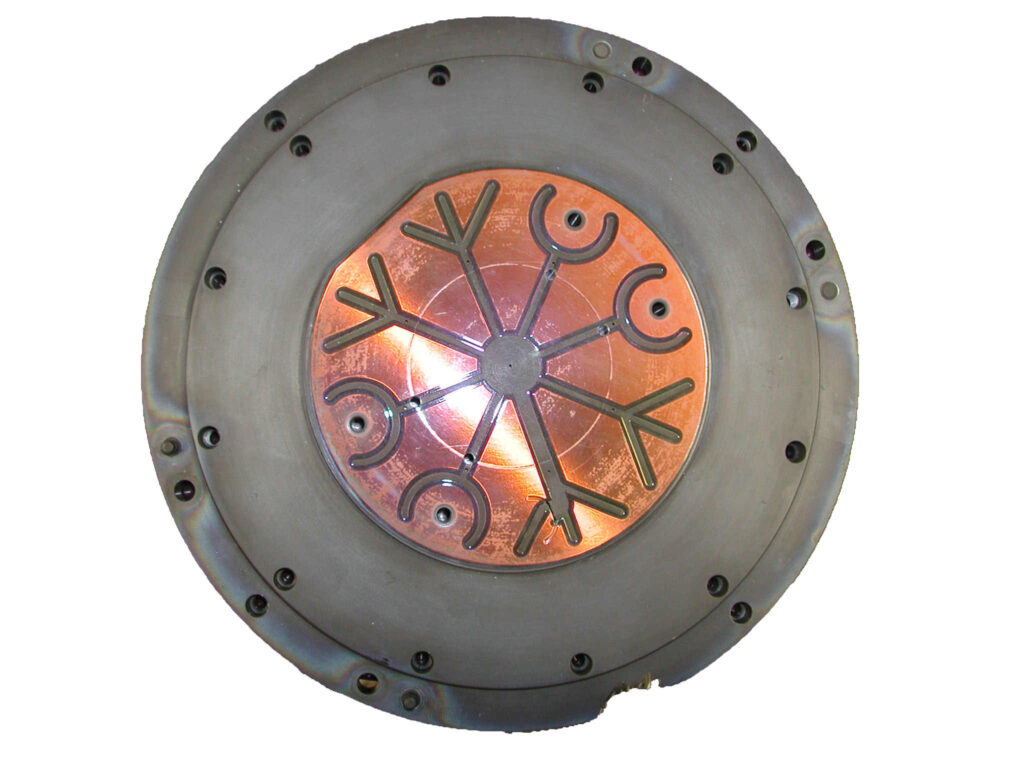
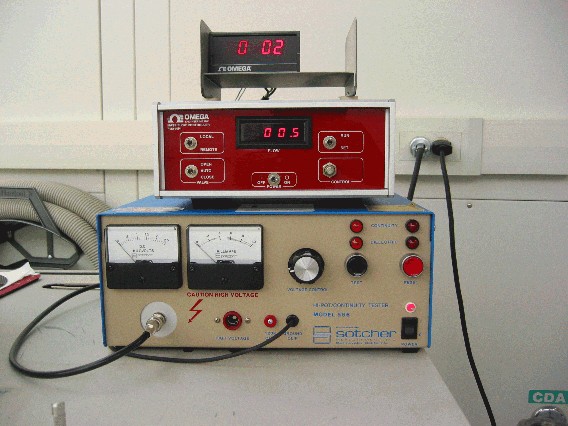
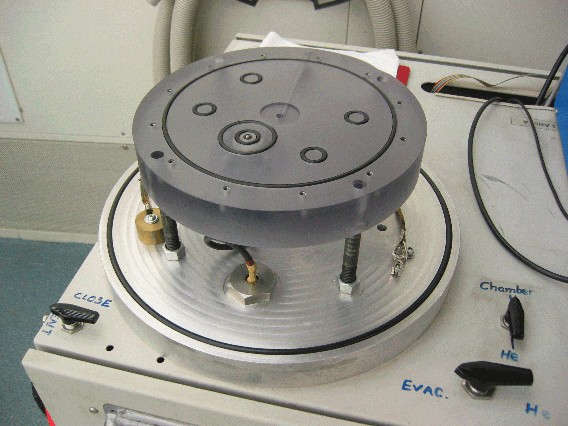
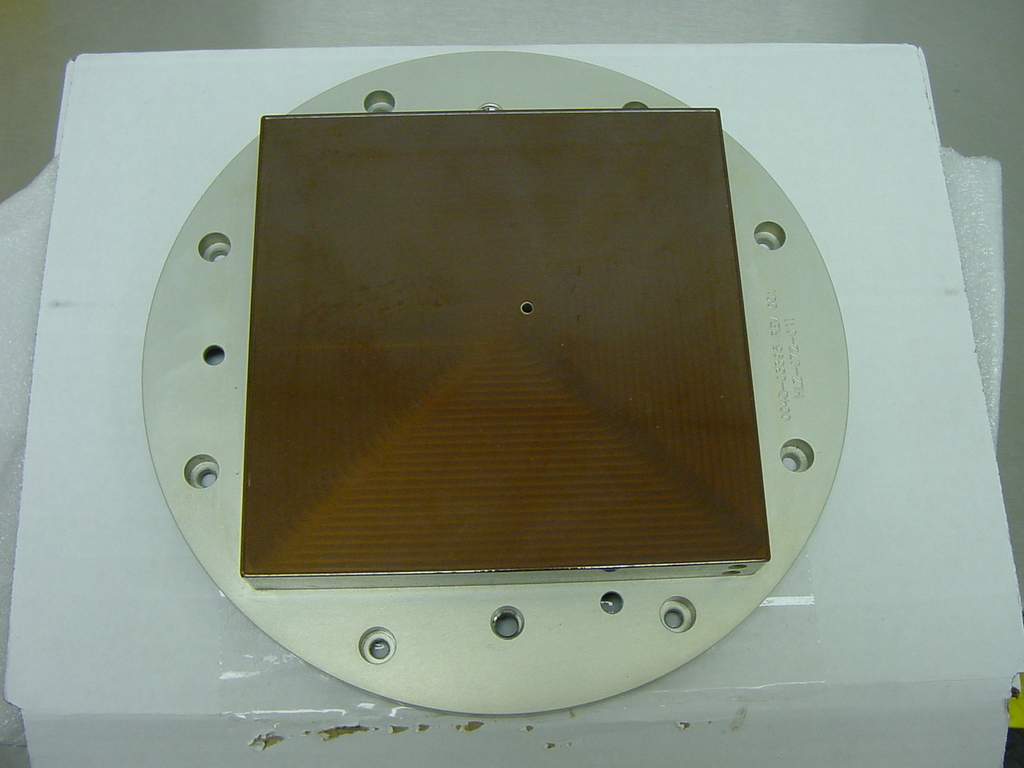
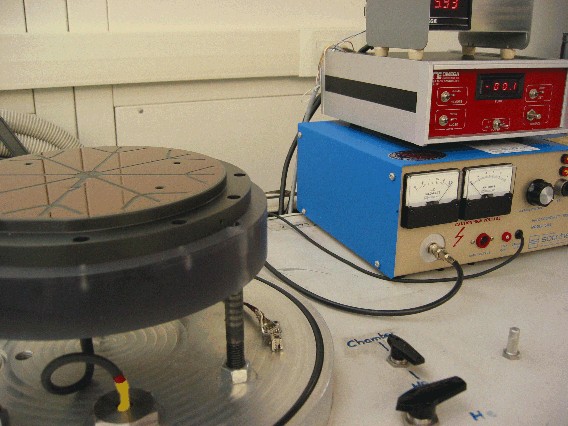
3-IN-1 CHUCK BEFORE AND AFTER FLEXIBLE CIRCUIT LAMINATION
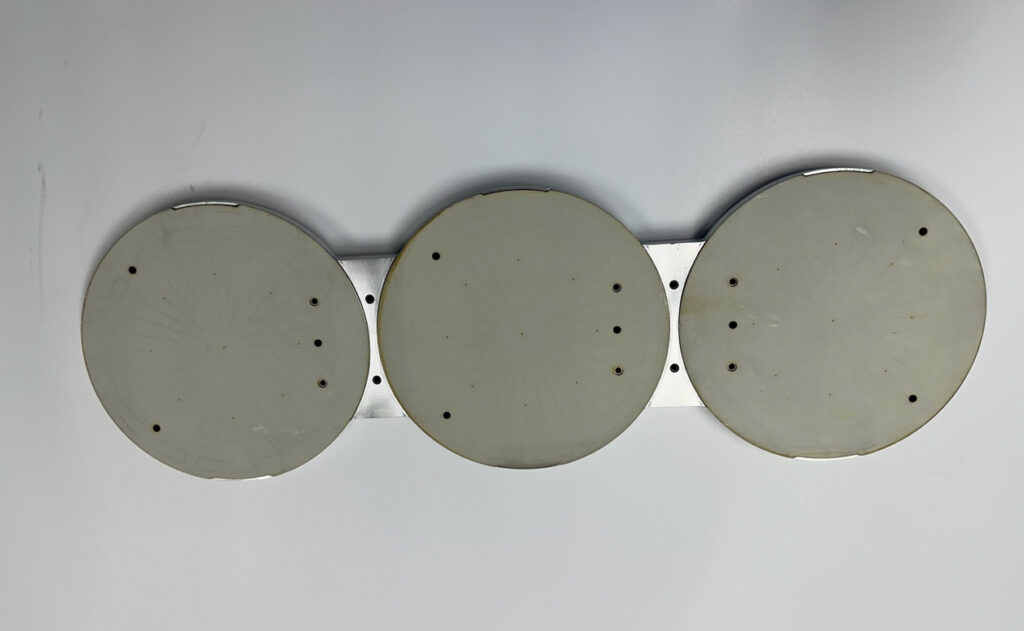
3-IN-1 CHUCK WITHOUT COVERLAYER
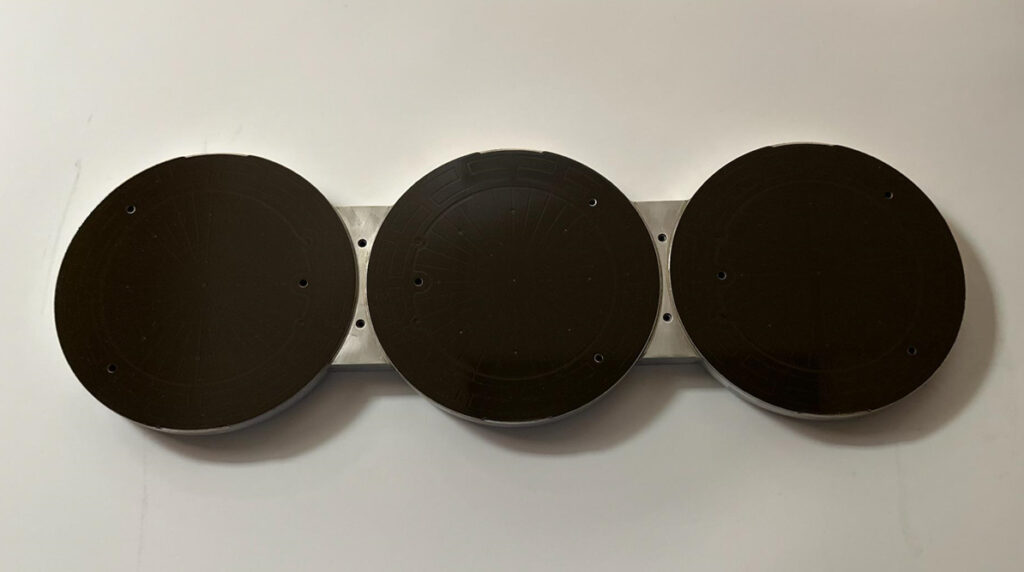
3-IN 1 CHUCK AFTER COVERLAYER LAMINATION
Frequently Asked Questions (FAQ) on ESC Chucks
What exactly is the Refurb. Pedestal ? What is a refurb. process ?
When a new pedestal is installed in the chamber, it is exposed to a process that degrades the flex layer over the chuck surface. After a certain number of hours, the pedestal fails to function and a new pedestal is needed. New units are prohibitively expensive, this is where Qflex stepped up and actually created a refurbish program especially for this client, saving them a vast amount of money.
During the ‘refurb’ process, the old flex layer is removed using a proprietary process and the anodization is checked over the entire surface. If there is any imperfection, the anodization is stripped and new layer is placed according to the OEM spec. Flex circuit is made with materials specified by OEM and manufactured step by step in accordance to the OEM guidelines. The flex circuit copper area and configuration is exactly same as the flex on the new pedestal. The flex is laminated by following process parameters same as those used by OEM. After the pedestal is ready, it is tested for electrical functionality as well as visual characteristics .
What is the difference between a new and a refurb pedestal ?
For all practical purpose – none. The manufacturing process is same, the materials are same.
What is the history on the refurb units ?
The refurb units have been used by many fabs since 1997. There have been no reports of any troubles.
What is the purpose of using refurb ESC ?
There is a substantial cost reduction by using refurb ESC while maintaining equal or better performance.
How is the cycle time in the chamber ?
The refurb pedestal will last an equal number of hours or more on average compared to a new chuck. Our customers are reporting 10%-17% longer cycle time with refurbished chucks. We have an extensive history on the usage and there is no doubt that this is a viable option.
If the refurb unit is “exactly same” as a new unit, why would a refurb unit last longer ?
The ESCs are made with a process involving 40 –50 steps. Each step is ‘base lined’ by OEM. That means the supplier for OEM will follow these steps without any change. What we have done is ‘fine tuned’ these steps and reduced the process windows on the steps. With tighter control, the performance improves.
What is so special about the materials for flex ?
Contrary to what is observed visually, the flex is nowhere similar to what is commonly known as ‘flex circuits’. The material is not Kapton and the adhesive is not acrylic. The processes involved are unique and they have to be followed with more discipline than normal flex manufacturing.
Can the customer remove the flex and send bare pedestal for refurb. ?
Some companies have tried to do this and created more problems.
Removing flex requires special process that will completely remove the top layer but leaves the pedestal surface untouched. This process was developed over a long time and it is impossible for the customer to duplicate it. Any attempt to remove it mechanically will damage the anodization. This damage is not visible by naked eye. All it takes is a miniscule sized damaged area and the unit will fail at that point after a few hours in the chamber because that is the weak point ( area of least resistance ).
How do I know that I will not have some unknown contamination by using the refurb ESCs. ?
Refurb ESCs have been in use at many facilities all over the world. They have excellent track record and there has been no report on any cross contamination.
How do I know that the anodization on the refurb ESC I have received is intact?
We have developed a surface test for anodization. We screen the entire surface before and after flex placement. If there is any damage to the anodization layer, we will remove the layer, clean the base metal and re-plate the layer to the OEM spec.
Can I specify that all my pedestals are re-anodized ?
Yes, but it is expensive and not necessary. Since we stand by our work and our track record proves our competence, you can leave it to us. Also, re-anodizing every time reduces the thickness. After a few refurb cycles, the pedestal might be unusable.
I am concerned about the anodization along edge. Is it a valid concern ?
If the concern is for particle contamination due to anodization wearing thin, it is not a problem. Due to extended use, the anodization can wear out a little but our cleaning and testing process will ensure the functionality of the pedestal. If the concern is for ‘cosmetic’ look, it becomes a money issue. By re-anodizing every refurb cycle, the chuck will ‘look’ nice, but it will cost extra money.
How do I control the flow of refurb ESCs ?
Each pedestal has a serial number stamped on the back side. The customer should maintain a log of the units going out and coming in. We can document these numbers on our packing slip. After that, it is easy to track the units back and forth over a period of time. Since these numbers are unique to each chuck, any issues on testing and inspection can be indexed to this identification number.
If there is a problem with the ESC I send in, how will I be notified ?
We inspect all incoming pedestals. If there is an obvious problem, we call and inform the customer. If the problem can be better described with a picture, we take a picture with a digital camera and e-mail for consultation. If the customer asks us to use it ‘as is’, we will do so. If not, we will mark the problem area with an arrow and send back without refurbishing.
If the final inspection shows a condition that requires customer’s input, we will send in a report with a sketch of the part in the shipment. The sketch and the report will indicate what the issue is.
What QC/QA standards are applicable for this project ?
The conventional IPC and other flex standards do not apply here. The entire inspection and testing program is developed specifically for this project. Because of our extensive experience in this field, we have been able to develop and implement a comprehensive quality program that allows ‘dock to stock’ on this product line.
How is the employee training handled ?
Typical manufacturing techniques do not cover a program like this. There are many unique aspects to this project that requires a specialized training including a thorough understanding of Failure Mode & Effects Analysis (FMEA). We have made extensive investment in our Employee Training Program called Next Operator As Customer (N.O.A.C.). This extremely successful program has allowed us to raise our quality level higher than ever before.
